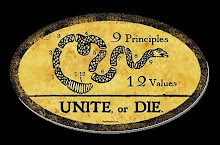 It's disaster planning on a galactic scale: Space experts want to come up with a contingency plan on what to do in case a killer asteroid collides with Earth.
It's disaster planning on a galactic scale: Space experts want to come up with a contingency plan on what to do in case a killer asteroid collides with Earth.The experts, including former American astronaut Rusty Schweickart, told U.N. officials recently that the international community needs a plan to counter so-called Near Earth Objects in advance of the potential catastrophe.
Deflecting asteroids - or at least evacuating people in areas where they might strike - could save millions of lives.
"This is a natural disaster, which is larger, potentially, than any other natural disaster we know of," Schweickart said. "However, it is preventable ... that's a very important thing to keep in mind. But it is our responsibility to take action to do that."
Asteroids are small planetary bodies that revolve around the sun, according to the NASA Web site, which states that many scientists believe an asteroid collided with Earth about 65 million years ago, helping cause environmental changes that led to the extinction of the dinosaurs.
Schweickart, a former Apollo 9 crew member, spoke at a news conference after briefing U.N. officials on a recent report called "Asteroid Threats: A Call for Global Response." The report was compiled by the International Panel on Asteroid Threat Mitigation, which is made up of members of the Association of Space Explorers, among others.
The report, among other things, calls for an international decision-making program within the framework of the United Nations to decide on actions to counter asteroids. It also urges the creation of an information, analysis and warning system that would operate telescopes worldwide to detect and track possibly harmful objects. Schweickart acknowledged that devastating collisions happen "very infrequently" but warned the risk could not be ignored.
Next year alone, six asteroids have a "very small" probability of hitting the Earth, he said. He added that over the coming years, researchers will increasingly be able to predict possible collisions, enabling early warnings and deflection operations.
While rare, Near Earth Objects have caused considerable damage in the not-too-distant past. One known as the Tunguska object slammed into remote central Siberia in 1908, unleashing energy equivalent to a nuclear bomb explosion. It wiped out 60 million trees over a 2,150-square-kilometer (830-square-mile) area.
Had it hit a populated area, the loss of life would have been staggering. For Walther Lichem, an Austrian member of the panel who was also at the news conference, investing in preventive measures is key to making sure such incidents don't happen again with more devastating effects.
"The damage potential is so incredible that we have to take the responsibility," he said.
Further reading: Official U.N. Report
International Panel on Asteroid Threat Mitigation, Association of Space Explorers































No comments:
Post a Comment